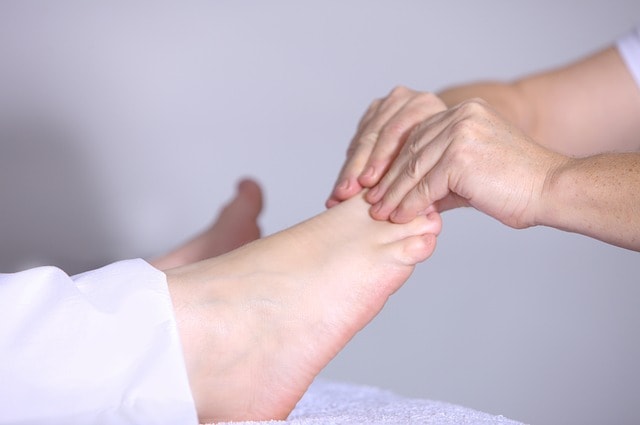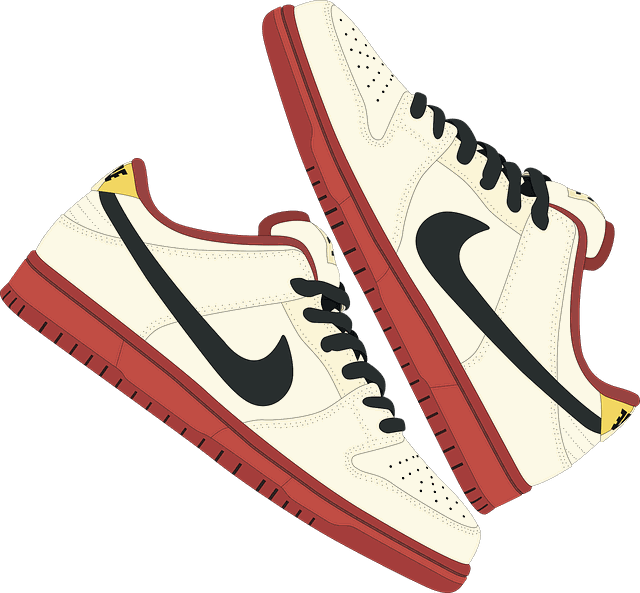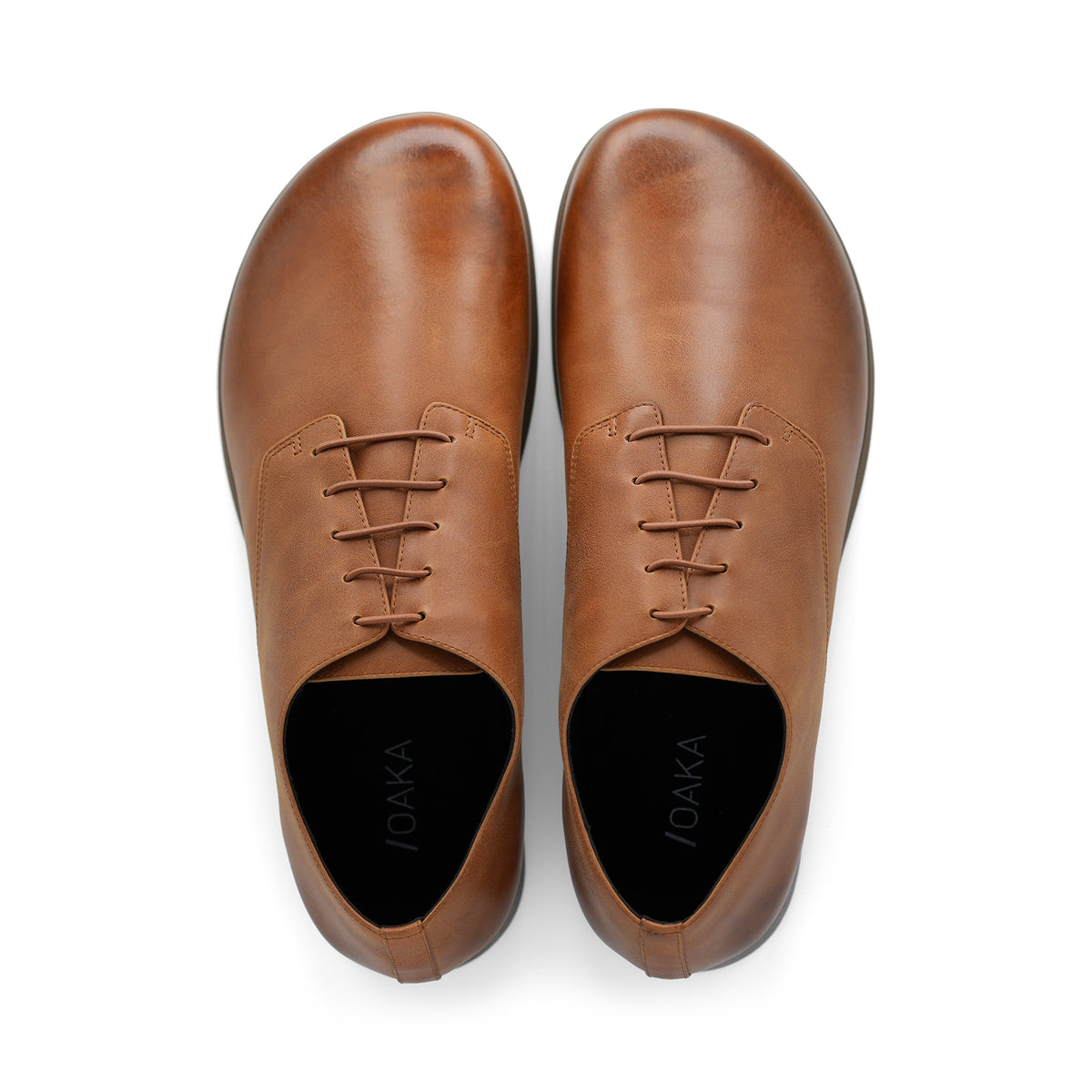Struggling with foot pain? This article will show you how to relieve foot pain with simple home remedies and practical exercises. We also cover when it’s time to seek professional care. Let’s get you back on your feet.
Key Takeaways
-
Home remedies such as NSAIDs, heat and cold therapy, and foot soaking techniques can provide effective relief for mild foot pain caused by overuse or minor injuries.
-
Engaging in regular exercises and stretches, such as calf stretches, toe spreading and scrunches, and the short-foot exercise, can strengthen foot muscles, improve flexibility, and prevent future pain.
-
Proper footwear, including well-fitting shoes, the use of inserts or orthotics, and avoiding high heels, plays a critical role in maintaining foot health and preventing pain.
Home-Based Remedies for Foot Pain

The first response to foot pain often starts at home. Luckily, there are several remedies you can try without having to leave your house. These home-based solutions are particularly useful for mild foot pain caused by overuse or minor injuries. By incorporating these accessible treatments into your routine, you can often find relief and prevent minor discomfort from escalating into more serious issues.
Some home remedies for foot pain include:
-
Resting and elevating your feet
-
Applying ice or cold packs to reduce inflammation
-
Stretching and strengthening exercises
-
Massaging your feet
-
Using over-the-counter pain relievers
-
Wearing supportive shoes or inserts
Remember to consult a healthcare professional if your severe foot pain persists or worsens, as various factors can cause foot pain, including instances when your feet hurt.
Let’s examine some useful home remedies that can help you relieve foot pain effectively.
Nonsteroidal Anti-Inflammatory Drugs (NSAIDs)
Nonsteroidal Anti-Inflammatory Drugs (NSAIDs) frequently serve as a common solution for foot pain. These medications work by reducing inflammation in the affected area, which in turn helps to alleviate pain. Common over-the-counter NSAIDs include ibuprofen and naproxen sodium, both of which can be effective in providing relief from foot discomfort.
Topical NSAIDs are also an option for those who prefer a more focused treatment to relieve pain. These come in the form of gels or creams that can be applied directly to the painful area, offering the benefit of pain relief with potentially fewer systemic side effects compared to oral medications. However, it’s important to note that while NSAIDs can be highly effective, they should be used judiciously.
If you frequently rely on these medications or use them for extended periods, it’s advisable to consult a healthcare professional to ensure you’re treating the root cause of your foot pain and not merely hiding the symptoms.
Heat and Cold Therapy
Sometimes, the simplest solutions are the most effective in soothing foot pain. Enter heat and cold therapy – two time-tested methods that can work wonders for different types of foot discomfort. Cold therapy is particularly beneficial immediately following an injury or when dealing with acute pain. The cold helps to constrict blood vessels, reducing swelling and numbing the area to provide quick relief. For best results, apply a cloth-covered ice pack to the painful area for about 15 minutes at a time, several times throughout the day.
On the flip side, heat therapy can be a game-changer for chronic foot pain or stiffness. The warmth helps to increase blood flow to the area, relaxing tight muscles and joints, and promoting healing. You can use a warm compress, soak your feet in warm water, or even invest in a heating pad designed specifically for feet. For those dealing with particularly stubborn foot pain, consider alternating between hot and cold therapies. This contrast therapy can maximize pain relief by improving circulation while also reducing inflammation, giving you the best of both worlds.
Foot Soaking Techniques
After a long day on your feet, there’s nothing quite like sinking them into a soothing foot soak. But beyond just feeling good, foot soaks can actually play a significant role in alleviating foot pain and promoting overall foot health. The warm water helps to improve blood circulation, which can reduce swelling and soothe sore muscles. It’s like giving your feet a mini-spa treatment right in the comfort of your own home!
To elevate your foot soak from simply relaxing to truly therapeutic, consider adding some beneficial ingredients to the mix. Epsom salt, for instance, is a popular addition that can help reduce inflammation and ease joint pain. The magnesium sulfate in Epsom salt is absorbed through the skin, helping to relax muscles and reduce swelling.
For those dealing with foot odor or fungal issues, apple cider vinegar can be a game-changer. Just add a cup of apple cider vinegar to your foot soak to help combat these common foot problems. Remember, consistency is key – try to incorporate foot soaks into your regular routine for maximum benefit.
Practical Exercises and Stretches
While home remedies can provide immediate relief, incorporating practical exercises and stretches into your routine can offer long-term benefits for foot health. These simple yet effective movements can help strengthen the muscles in your feet and ankles, improve flexibility, and prevent future pain. The best part? Most of these exercises can be done anywhere, anytime, without any special equipment.
Let’s look at some key exercises that can contribute to maintaining healthy feet.
Calf Stretches
Sometimes, the solution to foot pain might be found a bit higher up. Calf stretches are a crucial component in maintaining foot health and alleviating pain, particularly for conditions like plantar fasciitis. These stretches help to reduce tension on the plantar fascia, the ligament that runs along the bottom of your foot, which can significantly decrease pain and discomfort.
One of the most effective calf stretches is the runner’s stretch, which targets both the calf muscles and the Achilles tendon. To perform this stretch:
-
Face a wall and place your hands against it at shoulder height.
-
Step one foot back, keeping the knee straight, while bending the front knee slightly.
-
Lean forward, keeping your back heel on the ground, until you feel a stretch in your calf.
-
Hold for 30 seconds, then switch sides.
For a deeper stretch, you can also try the Achilles stretch. This variation involves bending both knees slightly while maintaining the stretch. Remember, regularity is crucial – aim to include these stretches into your daily routine for optimal results.
Toe Spreading and Scrunches
While they might seem small and insignificant, your toes play a crucial role in maintaining balance and supporting your body weight. Toe spreading and scrunching exercises can help enhance the flexibility and strength of the muscles in your feet, contributing to overall foot health and pain prevention. These exercises are particularly beneficial for those with conditions like:
-
plantar fasciitis
-
bunions
-
hammertoes
-
flat feet
-
high arches
-
arthritis
-
diabetes
-
those who spend a lot of time on their feet
To perform toe spreading exercises, simply:
-
Sit comfortably and spread your toes as wide as possible without straining.
-
Hold this position for about 5 seconds, then relax.
-
Repeat this exercise 10 times for each foot.
-
For an added challenge, you can loop a rubber band around your toes to provide resistance as you spread them.
Toe scrunches, on the other hand, involve curling your toes downward as if you’re trying to grab something with them. A great way to practice this is by placing a towel on the floor and using your toes to scrunch it up. Not only does this exercise strengthen the muscles in your feet, but it can also help improve your arch support, potentially alleviating pain associated with flat feet.
Short-Foot Exercise
When it comes to foot exercises, bigger isn’t always better. Enter the short-foot exercise, a subtle yet powerful movement that targets the small intrinsic muscles of your foot. These muscles play a crucial role in maintaining the arch of your foot and providing stability during movement. By strengthening these often-overlooked muscles, you can improve your overall foot function and potentially reduce pain.
To perform the short-foot exercise, follow these steps:
-
Sit in a chair with your feet flat on the ground.
-
Focus on one foot at a time.
-
Without curling your toes, try to shorten your foot by drawing the ball of your foot back towards your heel.
-
You should feel the arch of your foot lifting slightly.
-
Hold this contraction for a few seconds, then relax.
-
Aim for 3 sets of 10 repetitions for each foot.
As you get more comfortable with the exercise, you can try performing it while standing or even during other activities. Regular practice of the short-foot exercise can lead to improved balance, reduced foot pain, and even better performance in activities like dance, martial arts, or yoga.
Choosing the Right Footwear

When it comes to foot health, wearing shoes that are right for you play a pivotal role. The right footwear can be the difference between persistent pain and comfortable, pain-free days. Proper shoes not only provide immediate comfort but also contribute to long-term foot health by supporting the natural shape and structure of your feet.
Let’s examine the key aspects of selecting the appropriate footwear to ensure the health and happiness of your feet.
Wearing Well-Fitting Shoes
Wearing well-fitting shoes is paramount to foot health and pain prevention. Shoes that fit properly distribute your body weight evenly across your feet, reducing the risk of developing pressure points that can lead to pain and discomfort. Moreover, well-fitting shoes provide the necessary support for your arches and heels, which is crucial for maintaining proper foot alignment and preventing conditions like plantar fasciitis.
When shopping for shoes, it’s essential to consider more than just your shoe size. Here are some factors to keep in mind:
-
Look for shoes with a wide toe box that allows your toes to spread naturally
-
Ensure there’s enough space between your longest toe and the front of the shoe
-
The heel should fit snugly without slipping
-
The arch support should match your foot’s natural arch
-
Remember, your feet may change size over time, so it’s a good idea to have them measured regularly.
Purchasing high-quality, well-fitting shoes might seem extravagant, but it’s an investment in your foot health that can yield significant benefits in comfort and pain prevention.
Shoe Inserts and Orthotics
For those seeking an extra layer of comfort and support, shoe inserts and orthotics can be game-changers. These devices are designed to provide additional cushioning, support specific areas of the foot, and correct biomechanical imbalances that may be causing pain. While over-the-counter inserts can be helpful for minor discomfort, custom orthotics prescribed by a podiatrist offer a more tailored solution for specific foot conditions.
Custom orthotics are particularly beneficial for individuals with structural foot problems or chronic pain. They can help redistribute pressure more evenly across the foot, provide arch support, and correct abnormal walking patterns. Whether you’re dealing with plantar fasciitis, flat feet, or high arches, the right orthotic can make a significant difference in your comfort level and overall foot health.
Keep in mind, while orthotics can be extremely effective, they’re not a universal remedy. It’s important to consult with a podiatrist to determine if orthotics are right for you and to ensure you’re getting the most appropriate type for your specific needs.
Avoiding High Heels
While high heels may be fashionable, they can be a significant source of foot pain and long-term foot problems. The unnatural position they force your feet into can lead to a host of issues, including heel pain, plantar fasciitis, and even structural changes in your feet over time. If you can’t completely give up your heels, try to limit wearing them to special occasions and opt for lower heels (no higher than two inches) when possible.
When you do wear heels, consider using cushioned inserts to provide extra support and comfort. Don’t forget, your feet bear the weight of your life – caring for them by selecting suitable footwear is an investment in your overall wellbeing and mobility.
When to Seek Professional Help
While many foot pain issues can be managed at home, there are times when professional intervention becomes necessary. Recognizing when to seek help is crucial in preventing minor problems from escalating into more serious conditions. If you’re experiencing severe pain, persistent swelling, or if your foot pain is interfering with your daily activities, it’s time to consult a healthcare professional. Additionally, individuals with underlying health conditions, such as diabetes, should be particularly vigilant about foot health and seek prompt medical attention for any foot-related concerns.
Let’s examine the different professional foot pain treatment options available for managing foot pain.
Consulting a Podiatrist
When foot pain persists or worsens despite home remedies, it’s time to consider consulting a podiatrist. These specialized doctors are experts in diagnosing and treating conditions of the foot and ankle. A podiatrist can provide an accurate diagnosis of your foot pain, which is crucial for determining the most effective treatment plan. They have the knowledge and tools to identify issues that may not be apparent to the untrained eye, ensuring that you’re addressing the root cause of your pain rather than just treating symptoms.
During your visit to a podiatrist, you can expect:
-
A thorough examination of your feet and ankles, including physical tests to assess your range of motion and strength, as well as imaging studies like X-rays if necessary.
-
The podiatrist will also ask about your symptoms, medical history, and lifestyle factors that might be contributing to your foot pain.
-
Based on this comprehensive evaluation, they can recommend a tailored treatment plan, which might include custom orthotics, specific exercises, medication, or in some cases, more advanced interventions.
Remember, early consultation with a podiatrist can often prevent minor foot problems from evolving into severe, chronic conditions.
Physical Therapy Options
Physical therapy can be an invaluable resource for those dealing with foot and ankle pain. A physical therapist specializes in improving mobility and reducing pain through targeted exercises and manual techniques. They can develop a personalized treatment plan that addresses your specific foot condition and overall physical health. For instance, if you’re dealing with flat feet, a physical therapist can guide you through exercises to strengthen the muscles that support your arches. They may also use techniques like ultrasound or electrical stimulation to reduce pain and promote healing.
Additionally, a physical therapist can teach you proper body mechanics and provide advice on footwear and daily activities to prevent future foot problems. The goal of physical therapy is not just to alleviate current pain, but to equip you with the tools and knowledge to maintain long-term foot health.
Cortisone Injections and Surgery
In some cases, when conservative treatments fail to provide adequate relief, more invasive options like cortisone injections or surgery may be considered. Cortisone injections can be particularly effective in reducing inflammation and pain associated with conditions like plantar fasciitis or heel spurs. These injections deliver a powerful anti-inflammatory medication directly to the site of pain, providing rapid relief. However, it’s important to note that while cortisone injections can be highly effective, they are typically used sparingly due to potential side effects with repeated use.
Surgery is generally considered a last resort for foot pain, reserved for cases where other treatments have been unsuccessful. The type of surgery will depend on the specific condition causing your foot pain. For instance:
-
A bunionectomy might be recommended for severe bunions
-
Tendon repair surgery could be necessary for certain types of tendinitis
-
In some cases of persistent heel pain, surgical removal of heel spurs might be considered
It’s crucial to have a thorough discussion with your podiatrist or orthopedic surgeon about the potential benefits and risks of surgery, as well as the expected recovery process, before making a decision.
Preventative Measures to Avoid Foot Pain

While treating foot pain is important, preventing it in the first place is even better. By incorporating certain preventative measures into your daily routine, you can significantly reduce your risk of developing foot pain and maintain overall foot health. These measures range from simple foot exercises to lifestyle changes that promote foot wellness.
Remember, your feet are the foundation of your body, and taking care of them can have positive effects on your overall health and quality of life. Let’s examine some effective strategies to preserve the best function of your feet and keep them free from pain.
Regular Foot Care Routine
Establishing a regular foot care routine is crucial for maintaining healthy feet and preventing pain. Here are some steps to follow:
-
Wash your feet daily with warm water, but avoid soaking them for too long as this can dry out the skin.
-
After washing, be sure to dry your feet thoroughly, especially between the toes, to prevent fungal infections.
-
Apply a moisturizer to keep the skin supple, but avoid putting it between the toes where excess moisture can lead to problems.
An essential part of your foot care routine should be regular inspection. Take a few moments each day to check your feet for any cuts, sores, or signs of infection. This is particularly important for individuals with diabetes or circulation problems. Don’t forget about your toenails – keep them trimmed straight across to prevent ingrown nails. If you have difficulty reaching your feet or have specific foot conditions, consider scheduling regular appointments with a podiatrist for professional care.
Remember, early detection of potential issues can prevent their escalation into more serious problems.
Staying Active and Healthy
Maintaining an active lifestyle is not just good for your overall health – it’s also beneficial for your feet. Regular exercise helps improve blood circulation to your feet, strengthens the muscles that support them, and maintains flexibility in your foot and ankle joints.
However, it’s important to choose activities that are kind to your feet, especially if you’re prone to foot pain. Low-impact exercises like swimming, cycling, or using an elliptical machine can provide excellent cardiovascular benefits without putting excessive stress on your feet.
If you enjoy walking or running, here are some tips to keep in mind:
-
Make sure you have appropriate footwear
-
Gradually increase your activity level to avoid overuse injuries
-
Remember, staying active also helps maintain a healthy weight, which reduces the daily stress on your feet.
By keeping your feet strong and your body healthy, you’re setting the foundation for pain-free mobility.
Going Barefoot Indoors
While proper footwear is crucial outdoors, there are surprising benefits to going barefoot indoors. Walking barefoot allows the small muscles in your feet to work and strengthen naturally. These muscles play a vital role in supporting your arches and maintaining proper foot alignment. When we constantly wear shoes, especially those with a lot of support, these muscles can become weak and underused, potentially leading to foot pain and instability. Some benefits of going barefoot indoors include:
-
Strengthening the muscles in your feet
-
Improving foot alignment
-
Increasing foot flexibility
-
Enhancing balance and stability
So kick off your shoes and enjoy the benefits of going barefoot at home!
Going barefoot at home has several benefits:
-
It improves proprioception – your body’s ability to sense its position in space, leading to better balance and reduced risk of falls.
-
It helps prevent common foot injuries like shin splints, plantar fasciitis, and stress fractures by allowing your feet to move and flex naturally.
-
It strengthens your feet.
However, if you have specific foot conditions or diabetes, consult with your podiatrist before adopting a barefoot routine. Start slowly, perhaps just for a few minutes a day, and gradually increase the time as your feet adjust. Remember, the goal is to strengthen your feet, not stress them, so listen to your body and stop if you experience any pain or discomfort.
Addressing Specific Foot Conditions

While general foot care practices are beneficial for everyone, certain foot conditions require more targeted approaches. Understanding these specific conditions and how to address them can make a significant difference in managing foot pain and improving overall foot health. Whether you’re dealing with plantar fasciitis, heel spurs, or flat feet, there are tailored strategies that can help alleviate your symptoms and prevent further complications.
Let’s investigate some common foot conditions and examine effective management techniques for each.
Managing Plantar Fasciitis
Plantar fasciitis is one of the most common causes of heel pain, affecting millions of people worldwide. This condition occurs when the plantar fascia, the thick band of tissue that connects your heel bone to your toes, becomes inflamed. The hallmark symptom of plantar fasciitis is a sharp, stabbing pain in the heel, especially when taking your first steps in the morning or after long periods of sitting.
Managing plantar fasciitis often requires a multi-faceted approach. Here are some strategies to consider:
-
Rest: Reduce activities that exacerbate the pain and give your feet time to heal.
-
Ice: Applying ice to the affected area can help reduce inflammation and provide pain relief.
-
Stretching exercises: Targeting the calf muscles and plantar fascia can be incredibly beneficial. Consider exercises such as toe spreading, towel scrunches, and calf stretches.
These strategies can help alleviate the symptoms of plantar fasciitis and promote healing.
Proper footwear is another critical factor in managing plantar fasciitis. Here are some tips for choosing the right shoes:
-
Look for shoes with good arch support and cushioning to help distribute weight more evenly across the foot, reducing stress on the plantar fascia.
-
Consider using orthotics, either over-the-counter or custom-made, to provide additional support.
-
For some individuals, wearing a night splint can be helpful as it keeps the plantar fascia stretched overnight, potentially reducing morning pain.
If conservative treatments don’t provide sufficient relief, your doctor might recommend more advanced interventions such as cortisone injections or, in rare cases, surgery. Remember, being consistent is crucial when managing plantar fasciitis – adhere to your treatment plan and have patience, as significant improvement can take several months.
Dealing with Heel Spurs
Heel spurs, bony growths that develop on the underside of the heel bone, are often associated with plantar fasciitis but can also occur independently. Interestingly, many people with heel spurs don’t experience any symptoms, while others may feel a sharp pain in the heel, especially when walking or standing for long periods.
The approach to managing heel spurs is similar to that of plantar fasciitis. Treatment options include:
-
Rest
-
Ice
-
Proper footwear
-
Stretching exercises, particularly those targeting the calf muscles and plantar fascia
-
Over-the-counter pain relievers (temporary relief) It’s important to address the underlying cause of the heel spurs.
Orthotics or shoe inserts can help redistribute pressure and provide cushioning for the heel. In some cases, physical therapy may be recommended to strengthen the muscles supporting the foot and improve overall foot mechanics. If conservative treatments don’t provide relief, your healthcare provider might suggest more advanced interventions.
Remember, heel spurs themselves typically aren’t the source of pain, but the inflammation of surrounding tissues, so reducing this inflammation is key to managing symptoms.
Coping with Flat Feet
Flat feet, also known as fallen arches, is a condition where the arch of the foot collapses, causing the entire sole of the foot to come into contact with the ground. While many people with flat feet don’t experience pain, for some, it can lead to discomfort in the feet, ankles, knees, hips, and lower back.
The good news is that there are several effective strategies for managing flat feet and reducing associated pain:
-
Wearing supportive shoes with arch support
-
Using orthotic inserts or custom-made orthotics
-
Doing exercises to strengthen the muscles in the feet and legs
-
Stretching the calf muscles regularly
-
Avoiding high-impact activities that can exacerbate pain
-
Maintaining a healthy weight to reduce stress on the feet
By implementing these strategies, you can find relief from flat feet and improve your overall foot health.
Wearing the right footwear is one of the most important aspects of managing flat feet. Here are some tips for choosing the right shoes:
-
Look for shoes with good arch support
-
Look for shoes with a firm heel counter to help stabilize the foot
-
Consider using orthotics for additional arch support and to distribute pressure more evenly across the foot
Strengthening exercises can also play a crucial role in managing flat feet. Some exercises that can help strengthen the muscles that support the arch include:
-
Short foot exercise
-
Calf raises
-
Toe curls
-
Ankle inversions
Don’t forget about stretching – tight calf muscles can contribute to flat feet, so regular calf stretches are important.
If pain persists despite these measures to ease pain, consider consulting a podiatrist or physical therapist for a more tailored treatment plan.
Summary
As we’ve journeyed through the landscape of foot pain relief, we’ve explored a wide range of strategies to keep your feet healthy and pain-free. From simple home remedies like NSAIDs and foot soaks to more advanced interventions like orthotics and physical therapy, there’s a solution for every type of foot pain. We’ve learned the importance of proper footwear, regular exercise, and consistent foot care in preventing and managing foot issues. Remember, your feet are the foundation of your body, and taking care of them is an investment in your overall health and well-being. Whether you’re dealing with plantar fasciitis, heel spurs, or flat feet, or simply want to maintain healthy feet, the key is to be proactive and consistent in your foot care routine. Don’t let foot pain hold you back – with the right knowledge and tools, you can step confidently into a pain-free future. Here’s to happy, healthy feet that carry you through life’s journey with ease and comfort!
Frequently Asked Questions
How long does it typically take for foot pain to improve with home remedies?
Improvement in foot pain with home remedies can vary, with mild cases showing progress within a few days to a week, while more persistent issues may require several weeks or months of dedicated treatment. If there's no improvement after 2-3 weeks, or if the pain worsens, it's best to seek advice from a healthcare professional.
Can wearing high heels occasionally cause long-term foot problems?
Yes, occasional use of high heels is unlikely to cause significant long-term problems, but frequent wear can lead to issues such as bunions, hammertoes, and changes in foot structure. It's best to limit high heel use to special occasions, opt for lower heels when possible, and have a comfortable pair of shoes to change into.
Is it normal for my feet to hurt after standing all day at work?
It's common to experience some discomfort after standing for long periods, but persistent or severe pain is not normal. Take measures such as wearing supportive shoes, using anti-fatigue mats, taking regular breaks, and doing foot exercises. If the pain continues, consider seeking advice from a podiatrist.
How often should I replace my running shoes to prevent foot pain?
You should replace your running shoes every 400-500 miles or every 4-6 months for regular runners, but this can vary based on factors like your running style and body weight. Signs that it's time to replace your shoes include visible wear on the soles, decreased cushioning, or new aches and pains in your feet or legs. Worn-out shoes lose their ability to absorb shock effectively, leading to foot pain and injuries.
Can diabetes affect my foot health, and what extra precautions should I take?
Yes, diabetes can significantly impact foot health by causing nerve damage and reduced blood flow. To protect your feet, inspect them daily for any changes, keep them clean and moisturized, and avoid going barefoot. Regular check-ups with a podiatrist and prompt treatment of any foot injuries are also crucial for maintaining good foot health. Proper diabetes management, including blood sugar control, is essential.
_____________
P.S. Try OAKA, our barefoot Derby style dress shoe that strengthens your feet and provides all day comfort.
---
Michael Plater is an authority on barefoot shoes, having spent years reviewing and testing products as well as modifying and ripping out soles to find the healthiest options.

